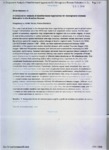Please use this identifier to cite or link to this item:
http://www.alice.cnptia.embrapa.br/alice/handle/doc/31654| Title: | A Comparative analysis of satellite-based approaches for aboveground biomass estimation in the Brazilian Amazon. |
| Authors: | LU, D.  MORAN, E.   BATISTELLA, M.   |
| Affiliation: | Dengsheng Lu, Indiana University; Mateus Batistella, Indiana University; MATEUS BATISTELLA, CNPM. |
| Date Issued: | 2008 |
| Citation: | In: CONFERÊNCIA CIENTÍFICA INTERNACIONAL AMAZÔNIA EM PERSPECTIVA CIÊNCIA INTEGRADA PARA UM FUTURO SUSTENTÁVEL, 2008. Manaus: Conference Abstracts... Brasília, DF: LBA, 2008. |
| Pages: | 1 p. |
| Description: | The moist tropical forest in the Amazon has been regarded as an important part in global carbon budget. Deforestation since the 1970s has made it an important carbon source, but the rapid growth of secondary vegetation may compensate its negative role to a certain degree. In order to reduce the uncertainty in carbon estimation at regional or global scale, it is critical to timely provide the carbon spatial distribution with high accuracy. Remotely sensed data have become the primary source for mapping carbon storage at local or regional scale. Thanks to the NASA LBA-ECO funded projects (1998 - 2008), we have explored aboveground biomass (AGB) estimation in the eastern and western Brazilian Amazon with Landsat Thematic Mapper (TM) images. Different TM spectral responses and textures were examined for improving the AGB estimation performance. Subpixel information extracted from the spectral mixture analysis of TM multispectral images was also examined. Entropy was used to analyze the complexity of forest stand structure and to examine impacts of different stand structures on TM reflectance data. This research indicates that estimating AGB is still a challenge task, especially for the sites with complicated biophysical environments. The TM spectral responses are more suitable for AGB estimation in the sites with relatively simple forest stand structure than for the sites with complicated forest stand structure. Conversely, textures appear more important than spectral responses in AGB estimation in the sites with complicated forest stand structure. A combination of spectral responses and textures improves AGB estimation performance. Using fraction images perform better for successional vegetation AGB estimation than using TM spectral signatures. However, both models based on TM spectral signatures and fractions provided poor performance for primary forest AGB estimation. The complex stand structure and associated canopy shadow greatly reduced relationships between AGB and TM reflectance or fraction images. Different study areas having various biophysical conditions affect AGB estimation performance. More research is needed to focus on the integration of optical and radar data, the use of multisource data, and the selection of suitable variables and algorithms for AGB estimation at different scales. The AGB estimates at local scale may be used as a reference data for calibrating or validating the model-based carbon estimates at regional or global scale. Sessão: 3. Integrando fluxos de carbono para a regi?o a partir de medidas em pontos de coleta, torres e aeronaves. Tipo de Apresentação: Oral |
| Keywords: | Integração do fluxo de carbono Observação de torres e aeronaves Análise de imagens de satélite Amazonas Brasil |
| Notes: | (Apresentação oral) |
| Type of Material: | Resumo em anais e proceedings |
| Access: | openAccess |
| Appears in Collections: | Resumo em anais de congresso (CNPM)  |










